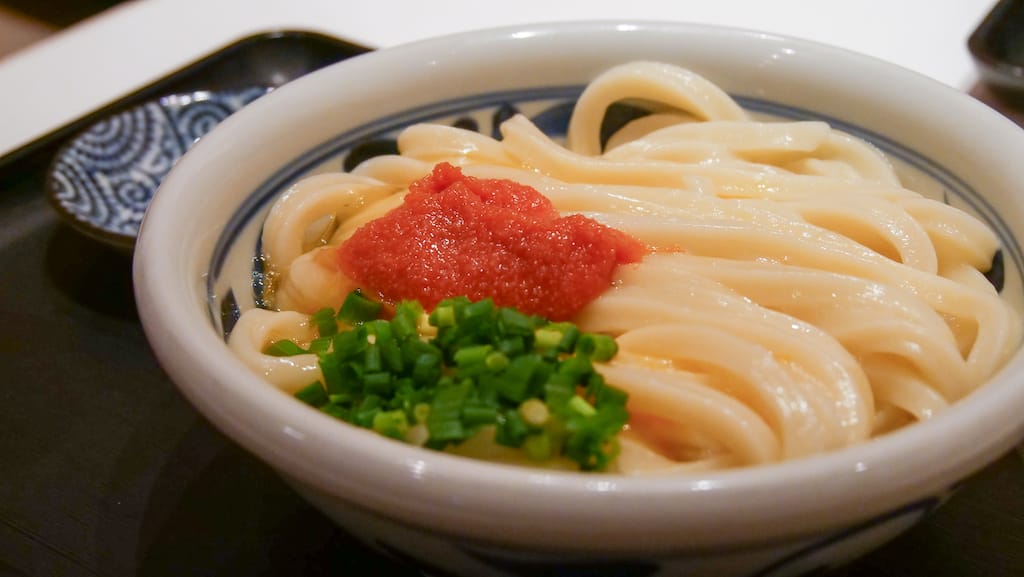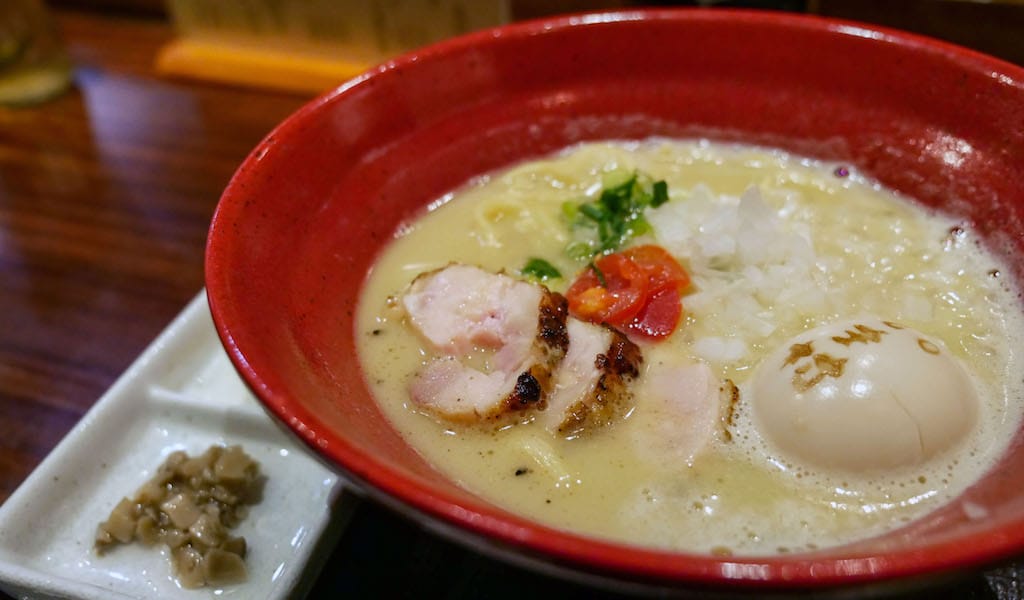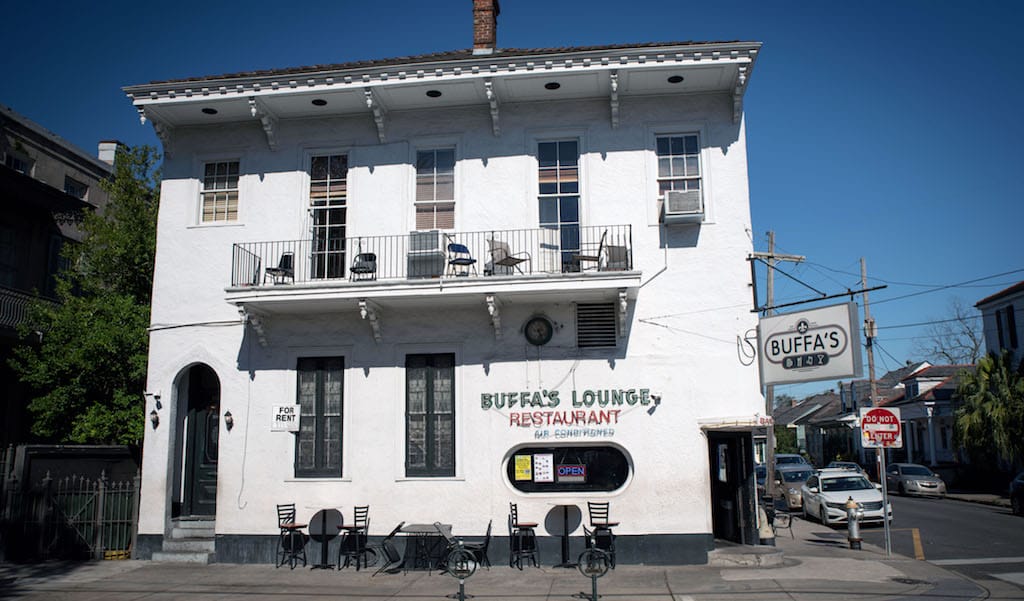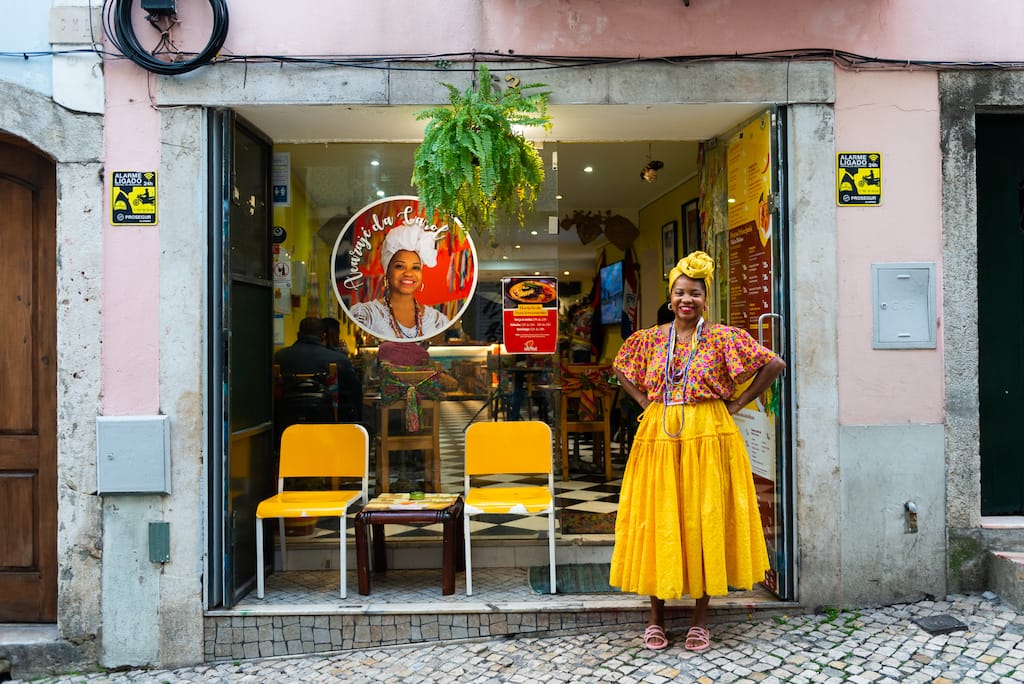There’s a pocket of Tokyo, strolling distance from the stock exchange and the former commercial center, which feels like a step back in time. Ningyocho is filled with stores specializing in traditional crafts, some more than 100 years old. Here you can buy rice crackers or traditional Japanese sweets or head for a kimono, before watching kabuki (traditional Japanese theater) at Meijiza.
On Ningyocho’s main street, just a few minutes from Suitengu Shrine which couples visit to pray to conceive a child or for safe childbirth, is a window. The window isn’t very wide, but a flurry of movement draws the attention of passersby. There, a broad-faced Kazuyuki Tani is making udon, bouncing – no, dancing – as he works.
He rolls out sheet upon sheet of white udon dough, slicing it into thick, chunky noodles. He bundles them, flicking them upwards with a triumphant flourish as he examines their length and width. It’s a gesture that signals the springy texture that the noodles promise.
Japan is a country where it’s perfectly appropriate to be seduced by texture. In fact, it’s encouraged. Taste and texture are held as equals through the rightful recognition that both contribute to the enjoyment of food.
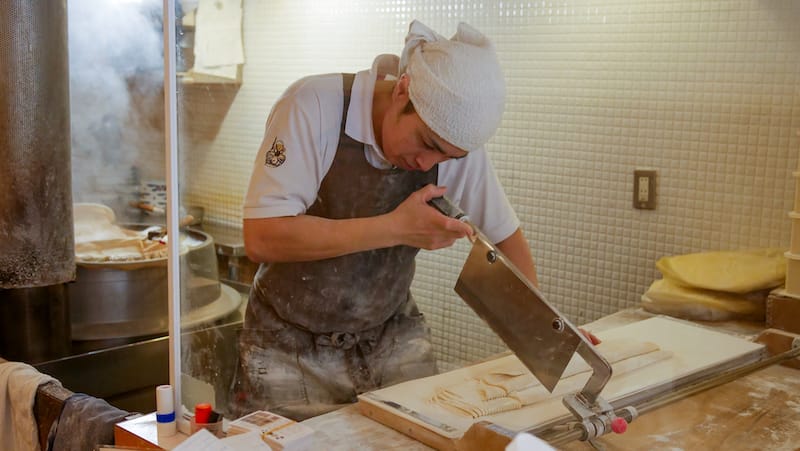
While English is sometimes lexically lacking, Japanese is rich with descriptors – kari-kari, gari-gari, shaki-shaki, jaki-jaki, and saku-saku all describe different kinds of crunch and crispiness.
Noodles at Taniya are blissfully mochi-mochi or mocchiri (chewy) and have the perfect amount of koshi (elasticity).
We’ve visited several times now, always welcomed by the beaming, bouncing Tani in the window. We squeeze down the side of the counter and head to the tables at the back.
The menu has all the classics, among more creative options as well. We’ve tried a comforting kare (Japanese curry) udon, the rich, mildly spice-flecked savory-sweet sauces coating the noodles with aplomb. We’ve slurped up niku udon, the rich beef flavor rippling out into the soup. We’ve devoured the kashiwa-ten udon, chicken breast tempura udon with other tempura veggies. We choose the tsuke option, so the broth – light yet brimming with subtle umami – comes on the side, and we can dip our noodles at leisure.
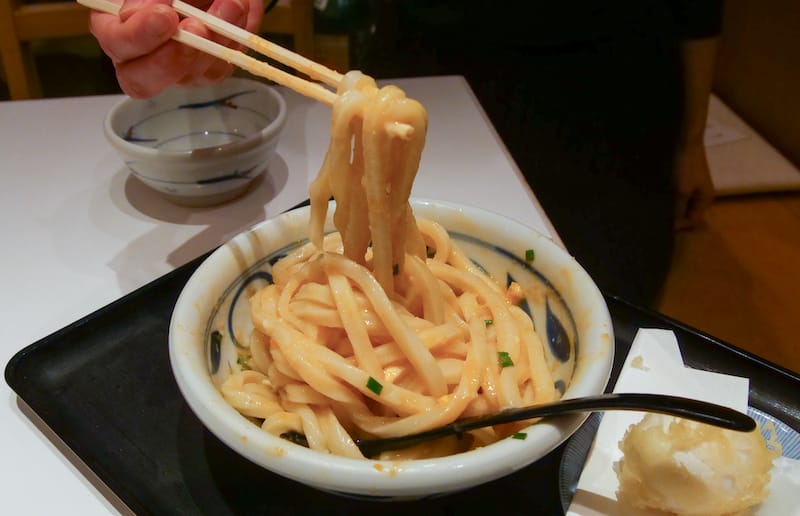
There’s one dish, however, we always order without fail – the mentaiko-kama-bata udon, noodles elegantly nestled in a bowl, topped with a dollop of salted, mildly spicy walleye pollack roe, a raw egg yolk, and a cube of butter. It’s creamy, salty and, frankly, addictive. The butter and egg luxuriously coat the noodles, adding to the slippery delight of slurping, and steering them toward pasta territory.
“It took me about a year to perfect the noodles,” says Tani, reflecting on moving to Tokyo to launch the restaurant.

Tani hails from Kagawa Prefecture in Japan’s southwest, known as Japan’s udon prefecture – specifically sanuki udon, noodles renowned for their square shape, flat edges and chewy texture. Kagawa reportedly has more udon stores per capita than any other prefecture in Japan, a fact born out of its geography. It’s nestled north of the Sanuki Mountains, which block rainfall arriving from the Pacific Ocean. This led to difficulties with establishing the production of rice production, the staple in the Japanese diet. Locals built reservoirs to aid cultivation but began searching for a suitable crop as a back-up in the case of drought. This led to a proliferation of wheat, and combined with the regional availability of soy sauce, sardines and salt – all key ingredients in udon broth – wheat-based udon noodles became established as a beloved local dish.
Tani grew up in the prefecture’s capital of Takamatsu as the third-generation son of a flower shop owner. He initially followed his peers to university simply because that was what was expected, but he quickly dropped out.
“I was made fun of by people around me,” he recounts. “They were like, ‘What’s this kid doing? It’s no good if you don’t graduate from university.’ That kind of thing.”
But Tani had already made up his mind to pursue udon and he saw no reason to waste his time with academic studies. He joined the highly renowned and revered udon restaurant Moriya in the south of Takamatsu, and began training in earnest.
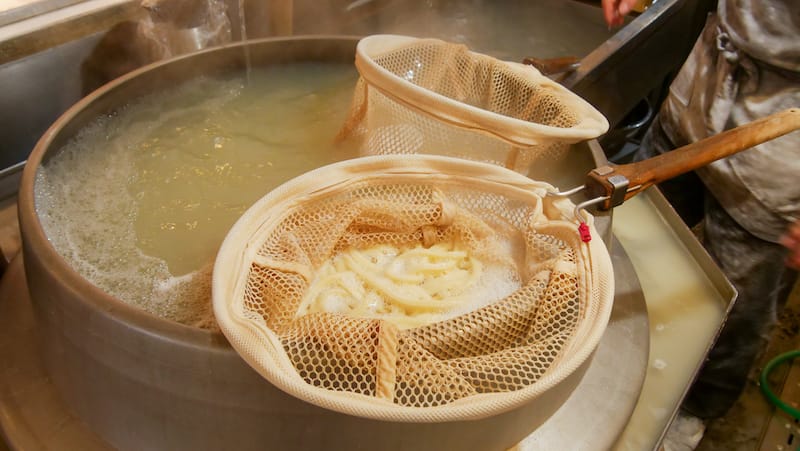
It was a brutal experience. “At first, I thought I was going to die,” Tani admits, describing the long working hours and how he only had three days of holiday a year. But he has no regrets; he learned fast and became fast friends with his colleagues, who supported each other, and many of whom now own successful udon stores themselves.

For Tani, his move towards independence came at the age of 25. He secured investment from a customer and headed to Tokyo to strike out on his own. He says it was a natural progression for him to head to the best market for cuisine and ingredients. Similarly, his choice of location in Ningyocho was no passing whim.
“Ningyocho has many long-established shops. There are many people who understand taste. They appreciate good food. If you succeed in this town, you truly succeed,” he says with conviction.
It was no easy journey. First of all, Tani had to develop udon that not only built upon his training and reflected his own unique style, but that were also adapted to his new environment. The difference in water presented a challenge, and he found temperature control difficult. The latent heat from machinery in the kitchen keeps the restaurant relatively warm overnight, but then the air cools with air conditioning and ventilation through the day as he and the team cook the broth. Perfect udon noodles, however, are produced when the dough begins at a cool temperature and slowly warms up.
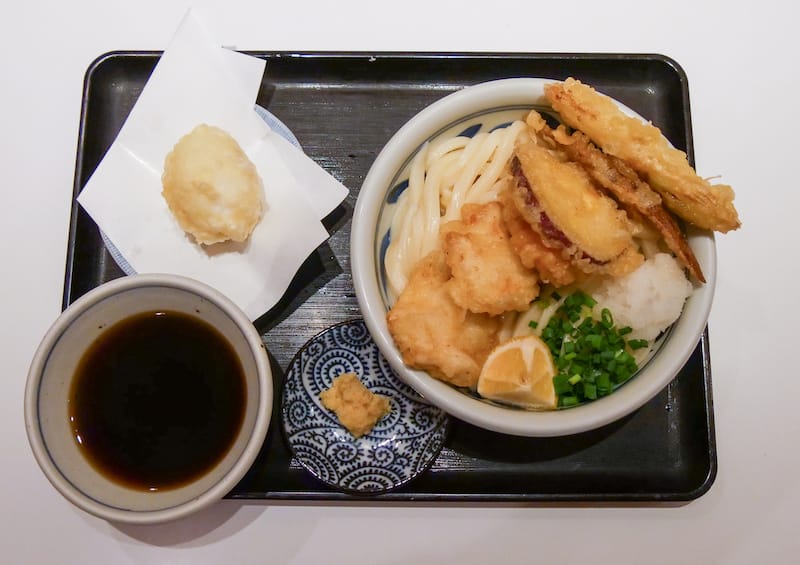
“I always give this analogy,” Tani explains. “It’s like an athlete warming up gradually with some running, then going harder and harder before the match. But if it’s the opposite, going hard and then slowing down before a match, then they just can’t perform.”
This is why, every day, Tani or his staff begin making the dough at 3 a.m., ready for the rolling and cutting performance when business begins. The broth is made with similar care. Tani shuns the use of any additives, and again, it took him about a year to perfect the recipe.
“It’s my own concept, but I think of the dashi (Japanese stock) as a gift from nature and the udon as the skill of the shokunin (craftsman).”
It’s a winning formula that has allowed Taniya to serve udon fans for more than 13 years. There’s always a lunchtime rush and on weekends a queue forms before the doors open at 11 a.m.
Yet, despite its popularity, it’s a place where people are free to linger a little. There’s an extensive drinks menu, including several types of beer, sake and shochu, and the evening menu offers several small plates to share. Udon can also be ordered in portions small, medium, or large with no extra cost. This welcoming atmosphere and versatility results in a broad spectrum of people – families, businesspeople and, elderly residents – coming for their noodle fix.
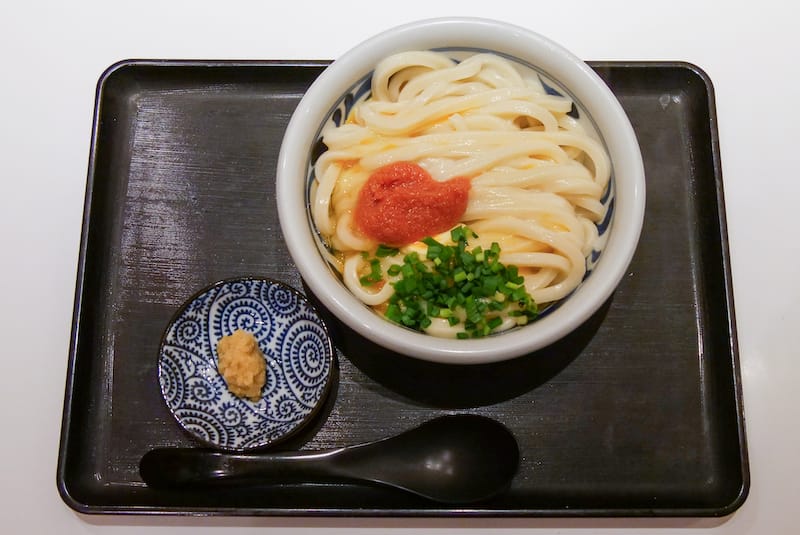
“When I was young, I thought I only had to perfect the product,” says Tani. “But I think the most important thing is that the customers leave with a smile on their face. Ticket vending machines have become quite popular, but I want to serve customers on a person-to-person basis. There are times when I make mistakes. But, in a world where everything is becoming easier and easier, I want to do things in a way that might be considered inefficient.”
Without fail, the lights at Taniya turn on at 3 a.m. as preparation begins. Stroll past later in the day and spy both customers and passersby stopped at that narrow window, enjoying the noodle-making performance.
Being a passerby, however, is not recommended. They’re missing out on some of the chewiest, springiest and most mocchiri udon in town.
 August 30, 2022 Menya Imamura
August 30, 2022 Menya Imamura
In 2015, a ramen store in Tokyo made waves by becoming the first ever to receive a […] Posted in Tokyo June 27, 2024 Buffa’s
June 27, 2024 Buffa’s
We all have that friend. A friend we should probably call more often. One who is always […] Posted in New Orleans June 21, 2024 Acarajé da Carol: Burger of Bahia
June 21, 2024 Acarajé da Carol: Burger of Bahia
It’s a bit of culinary magic. Plain old black-eyed peas are transformed into a fluffy […] Posted in Lisbon
Published on February 08, 2024
Related stories
August 30, 2022
TokyoIn 2015, a ramen store in Tokyo made waves by becoming the first ever to receive a Michelin star. Tucked down a street in a slightly shabby area near Sugamo Station to Tokyo’s north, the store, Tsuta, was flooded with hordes of noodle worshippers and subsequently issued a timed-entry ticketing system to manage the crowds…
June 27, 2024
New Orleans | By James Cullen
New OrleansWe all have that friend. A friend we should probably call more often. One who is always there for us, but we don’t see often enough. A friend who we can pick up where we left off with, no matter how much time has elapsed between conversations. A friend whose company always leaves you satisfied…
June 21, 2024
LisbonIt’s a bit of culinary magic. Plain old black-eyed peas are transformed into a fluffy white cloud, before somehow changing once again, this time into a crimson, crispy fritter. This is acarajé, and as a dish with origins in Bahia, the homeland of Afro-Brazilian spirituality, other types of magic can also play a role. In…







































